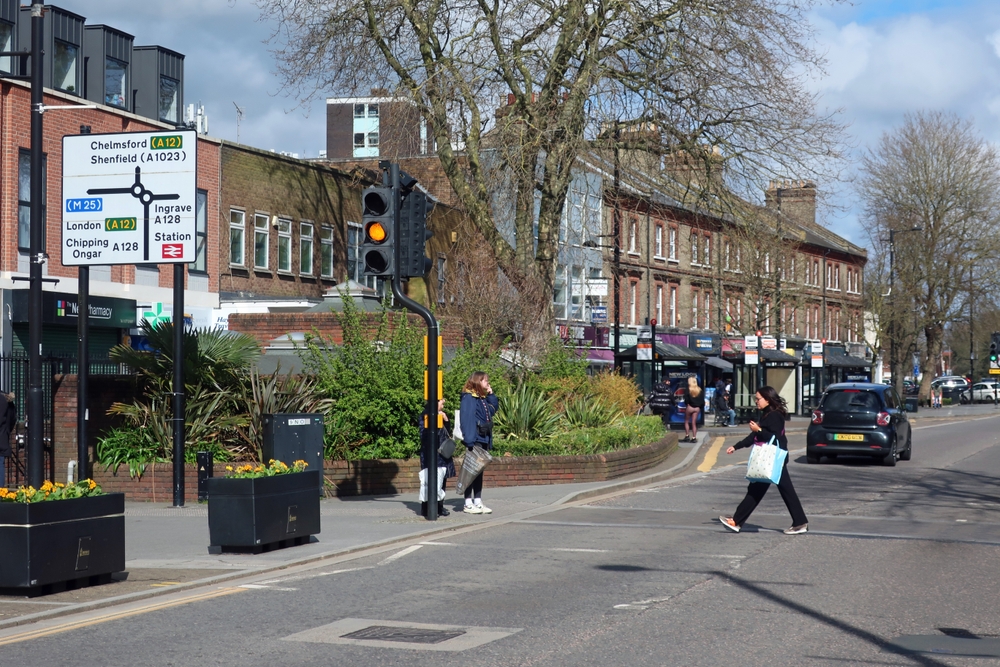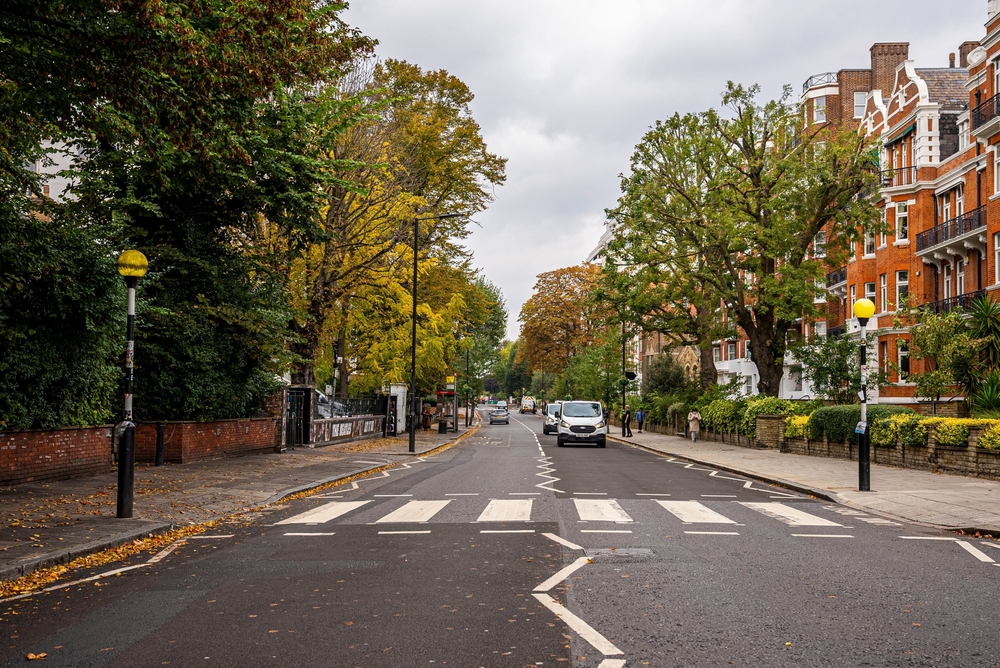Location Overview – Brentwood is a historic town in Essex, located approximately 20 miles northeast of central London. The town’s origins trace back to Saxon times, and it gained prominence in the 13th century with the establishment of a chapel dedicated to St. Thomas Becket, which became a popular stop for pilgrims on their way to Canterbury. Brentwood’s strategic location along the Roman road between London and Colchester further contributed to its development. Today, Brentwood is known for its vibrant high street, historic architecture, and proximity to the M25 motorway, making it a desirable location for commuters. The town is also home to Brentwood Cathedral, the seat of the Roman Catholic Diocese of Brentwood, and offers a mix of urban amenities and access to the surrounding countryside.

Our Range of Courses, Available in Brentwood:
Our tailored driving courses include a variety of formats, including:
* Company driver training – for van and car drivers in your fleet
* Young drivers – Confidence-building sessions for younger or newly qualified drivers
* Pre-court driving courses – speeding and other pending convictions.
* High-powered vehicle training
* Confidence driving courses
* Motorhome confidence courses – Focused training to build confidence driving larger leisure vehicles
* Advanced and defensive courses – bespoke to your needs
* Motorway confidence training – Helping drivers feel safer and more in control on motorways
* UK Familiarisation – for drivers new to the UK
We provide full UK coverage and come directly to you. All training is delivered in your own vehicle and is fully tailored to your individual needs, whether you’re a business or a private customer.
What Our Courses Cover:
Our advanced and defensive driver training is tailored to cover a broad range of key areas, depending on the specific course selected and the individual skills and experience of each driver. Some of the core topics we typically address include:
* Enhancing anticipation and forward-planning skills
* Developing greater speed awareness and control
* Improving driver mindset and attitude behind the wheel
* Mastering safer driving techniques across motorways, rural roads, and urban environments
* Deepening knowledge of road rules and driving regulations
* Understanding the causes of road rage and how to manage emotional responses
* Practising essential manoeuvres with confidence and precision
* Building skills for driving safely in adverse weather conditions
* Recognising different types of skids and how to respond effectively
* Adopting more fuel-efficient and eco-friendly driving habits
* Learning to better anticipate the behaviour of other road users
These points offer a general overview; some may be more relevant to certain drivers, while others might not. This emphasises the customised nature of our training.
Our Varying Course Options:
Course Duration:
Our UK-wide courses are available for both van and car drivers. Below is an overview of the duration options available:
3.5hrs – This is the shortest and most cost-effective option. While it’s perfect for companies training two or more drivers, it may be too brief for some individuals who require more in-depth training.
2 x 3.5hrs – Ideal for those who find a full day of training too demanding. This option allows drivers to absorb information over a longer period. Typically, drivers are given “homework” after the first session to practice before the second, making it particularly suitable for older drivers or those needing additional time to retain information.
7hrs (Full Day) – While this can be intense, it’s a more affordable option than two separate 3.5-hour sessions. It’s ideal for individuals with limited time, such as those requested by their employer to complete the course in one day. For business clients, we offer flexibility by splitting the day, training one driver in the morning and another in the afternoon.
Extended Courses (3, 4, or 5 x 3.5hrs) – Designed for those with more specific challenges or long periods of time away from driving. These courses are spread over several weeks, providing a deeper, more comprehensive approach to tackling driving difficulties or refreshing long-forgotten skills.
Get in touch today for more information about our courses and how we can help you. Please use the contact form on this page or call us.

Our driver training covers a wide range of roads, some of which can include:
The A12, a major dual-carriageway, bypasses Brentwood to the north, linking it to London and the wider region.
The A128, which runs through the centre of the town, connects Brentwood to Orsett in the south and Chipping Ongar in the north.
The A1023, also known as Brook Street and London Road, passes through Brentwood, connecting the town with the A12.
The A129 travels through the north and east of the town, connecting Brentwood with Billericay and Hadleigh.
The A127, known as the Southend Arterial Road, runs through the south of Brentwood Borough and connects it to London, Basildon, Southend, and surrounding areas.
Road Safety – Risks and Hazards in Brentwood
Based on available information, here are some of the most hazardous roads in Brentwood, Essex, identified due to their accident history and traffic concerns:
A12 Road
The A12 is a major road in Eastern England, running between London and Lowestoft. A section of the road between Lowestoft and Great Yarmouth became part of the A47 in 2017. Between the junctions with the M25 and the A14, the A12 forms part of the unsigned Euroroute E30. The 52-mile section of the road through Essex has sections of dual two lanes and dual three lanes, with eight changes in width between the M25 to Ipswich. It was named Britain’s worst road because of potholes and regular closures due to roadworks in a 2007 survey by Cornhill Insurance. The A12 is covered by the National Highways A12/A120 route-based strategy.
A127 Road
The A127, also known as the Southend Arterial Road, is a major road in Essex, England. It was constructed as a new arterial road project in the 1920s, linking Romford with Southend-on-Sea, replacing the older A13. Formerly classified as a trunk road, it was “de-trunked” in 1997. It is known as the Southend Arterial Road except for part of its length in Southend-on-Sea. It is also streetlit for its whole length despite its majority coverage through rural land.
A1023 Road
The A1023 is an A-road in Essex, England that goes from junction 28 on the M25 through Brentwood to the A12. The road was originally a Roman road which linked London and Colchester. It opened in 1966, after the A12 was rerouted along the current Brentwood Bypass. The road starts at junction 28 of the M25 (also known as Brook Street Interchange), and then heads northeast as Brook Street into Brentwood. While going through Brentwood, the road changes name to London Road, High Street, then Shenfield Road, where it meets the A128 at Wilson’s Corner junction. At Wilson’s Corner, northbound traffic follows Ongar Road towards Chipping Ongar and the A414, whilst southbound traffic follows Ingrave Road towards Ingrave and then on to the Southend Arterial Road (A127). The road then continues northeast from Wilson’s Corner, where it meets with the western end of the A129, which goes towards Sheffield station, Hutton, and Billericay. It then continues as Chelmsford Road until it meets the A12 again at the Maryland Interchange.
A128 Road
The A128 is a road in Essex, England, that runs from Orsett to Brentwood. The road passes through several towns and villages, including Orsett, West Horndon, and Brentwood. In Brentwood, the A128 intersects with the A1023 at Wilson’s Corner. The road continues west towards Orsett, connecting with the A13. The A128 provides access to various local amenities and serves as a key route for traffic travelling between these areas.
A129 Road
The A129 is a road in Essex, England, that runs from Brentwood to Billericay. The road passes through the towns of Hutton and Shenfield. In Brentwood, the A129 intersects with the A1023 at Wilson’s Corner. The road continues northeast towards Billericay, providing access to various local amenities and serving as a key route for traffic travelling between these areas.
These roads have been identified due to the frequency and severity of incidents reported. Efforts are ongoing to improve road safety in these areas through infrastructure enhancements and traffic management measures.
